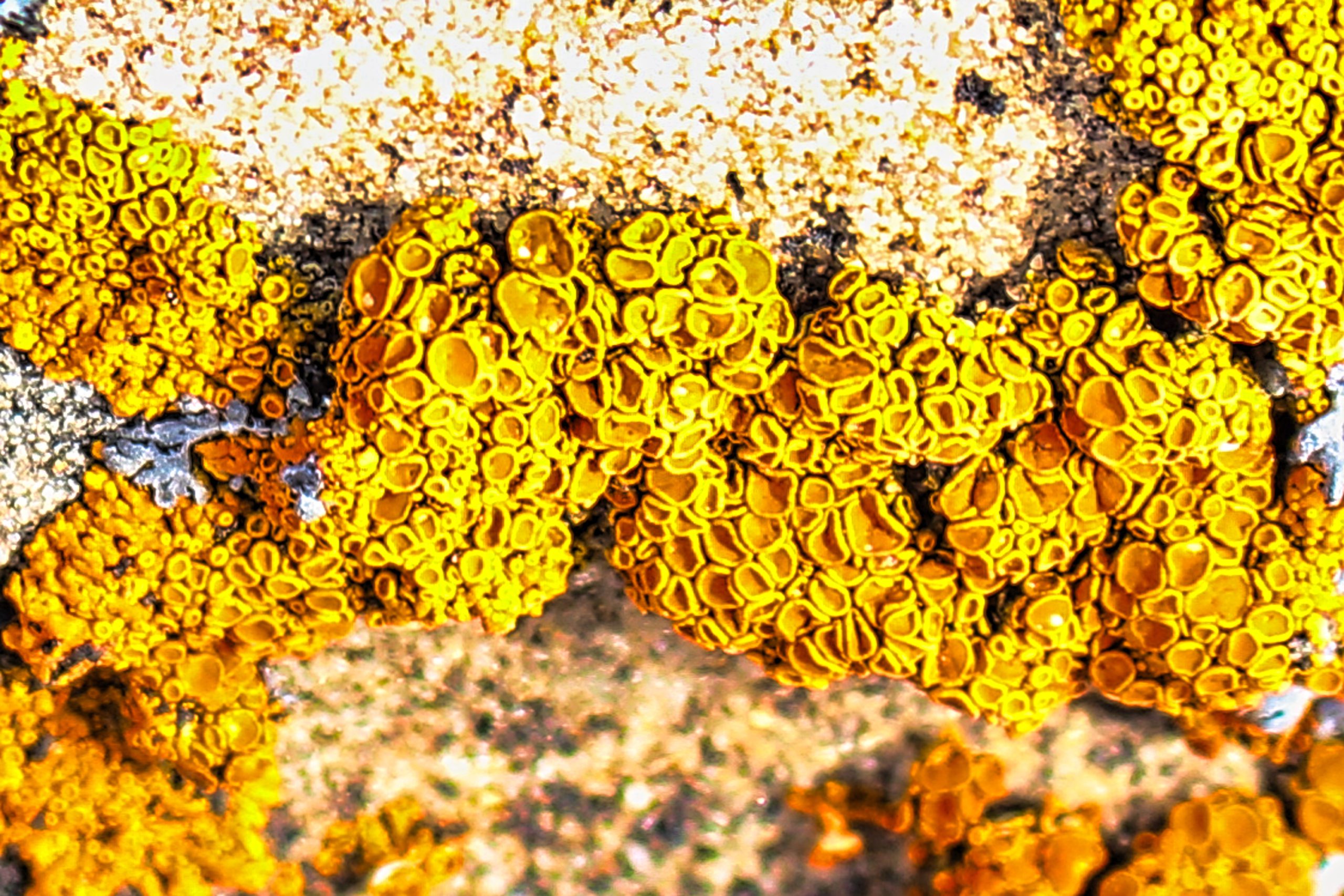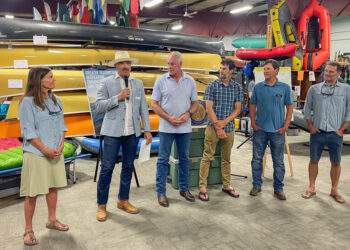By Paul Swenson EBS COLUMNIST

Mr. Lichen goes into a bar and orders a drink. The bartender says, “We don’t serve your type here.” Lichen responds, “How come? I’m mostly a ‘fun guy’.”
This of course is a hilarious joke for a mycologist, one who studies fungi, or a lichenologist.
Once you’re done wiping away tears of laughter, I’d like to introduce you to a class of composite organisms that live everywhere in the world and add a lot of interesting texture and color to our region. You’ve all seen them but maybe not known what they are.
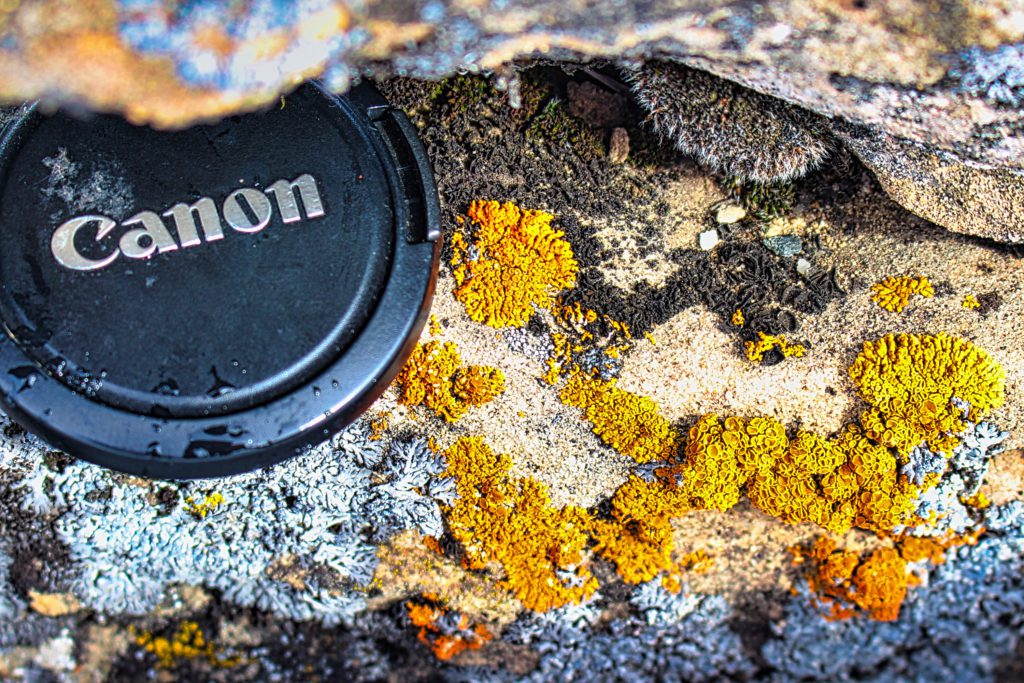
Lichens are not a single type of organism, but a mutualistic partnership between fungi, algae, cyanobacteria, and in some cases yeasts. Mutualism is defined in biology as a relationship between two or more organisms where their growth together benefits each organism. In the case of lichens, the fungus provides the structure where the algae, cyanobacteria, yeast, or any combination of them, can grow protected from the environment, including shielding from dehydration, predators, disease, ultraviolet radiation, temperature extremes, and other potential threats.
The fungus also anchors itself to a growing substrate such as a rock, tree, or building, giving the other members of this living community a stable platform. The algae and bacteria grow in between strands of fungal hyphae where they perform photosynthesis producing carbohydrates that they need for growth. These carbs are also provided to the fungus for its growth. It’s like a little micro-economy where the algae and cyanobacteria pay sugar rent to the fungus in exchange for a place to grow and thrive.
One of the major phyla of fungi that produce lichens are the Ascomycetes, or cup fungi. If you zoom into the first photograph you will notice the cup-like structure of the fungus.
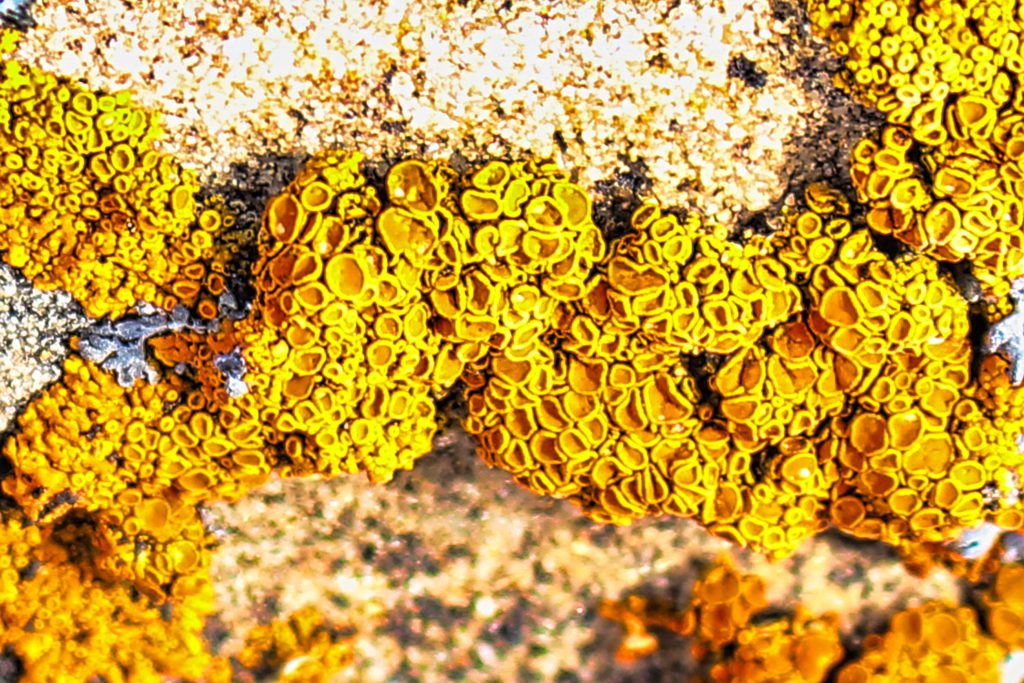
Of course the big question is, “How do lichens reproduce, since they are actually not an individual organism?” The answer is very interesting. Most fungi reproduce asexually by producing spores broadcast into the wind that settle onto surfaces away from the parent fungus and will grow if conditions are right. But the fungi involved in lichens cannot survive without the algae, bacteria, and yeast that it harbors. Therefore, the fungi in lichens have evolved a process where they bundle together their spores along with algae cells, bacteria, and yeast, into little packets called soredium which are then dispersed into the air.
If the soredia land on a suitable surface, the fungus begins to grow its structure, and the algae, bacteria, and yeast begin their growth within this thallus. Depending on the species, this growth can be exceedingly slow. Lichen grows so slowly, in fact , that they are used to date ancient buildings and structures by archeologists, age of glaciers by glaciologists, landslides and other land deformation by geomorphologists. This use of lichen as a time measuring device is called lichenometry. But how slow do they grow?

In the alpine environment of Big Sky, crustose lichen like the one in the photograph grow about 0.5mm in diameter per year. So the one shown in the photo is about 140 years old (7cm = 70mm => 70mm/0.5mm/year = 140 years); 2022-140 = 1882 is when this organism started growing. That was before Montana was a state!
Some species in the high alpine and Arctic have been dated into the thousands of years, making them some of the oldest organisms in the world. So when you’re scrambling around on the rocks in our region you might see some lichens that have been around longer than most of recorded human history. Thus one should respect that they have not been disturbed for this immense amount of time and leave the rocks untouched.
There are multiple classifications on the shape and structure of lichen: Crustose, Foliose, and Fruticose. Crustose are the ones you see growing on rocks in our region. As the name implies, they look just like crusts on the rock without much, if any, vertical structure. All the lichens pictured in figures 1 and 3 are crustose. Foliose lichens look like they are producing leaves, but of course that is the fungus thallus. Fruticose are long, fibrous, wispy lichens most people call “moss” that grows on trees.
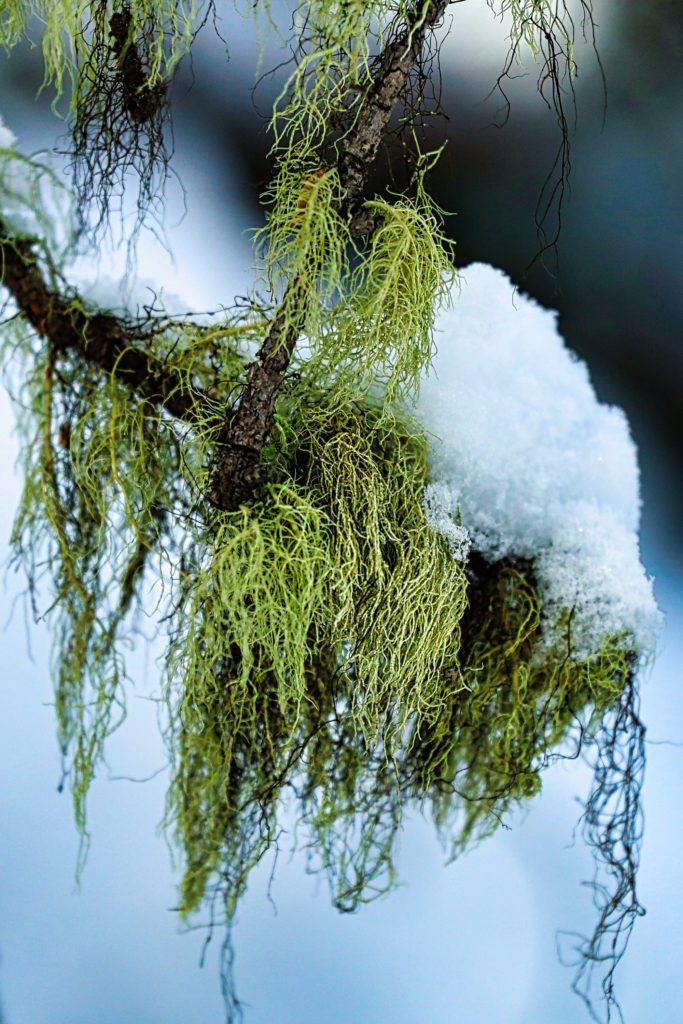
These fruticose lichens grow much faster than the crustose lichens so are not used in lichenometry.
Lichens come in all sorts of colors, textures, shapes, and sizes and add interest to the landscape. Look for lichen when you travel out and about in the Big Sky region. Hopefully you’ll recognize these amazing living communities that have been around for millennia and will give them a nod for their hardiness.
Paul Swenson has been living in and around the Big Sky area since 1966. He is a retired science teacher, fishing guide, Yellowstone guide and naturalist. Also an artist and photographer, Swenson focuses on the intricacies found in nature.



